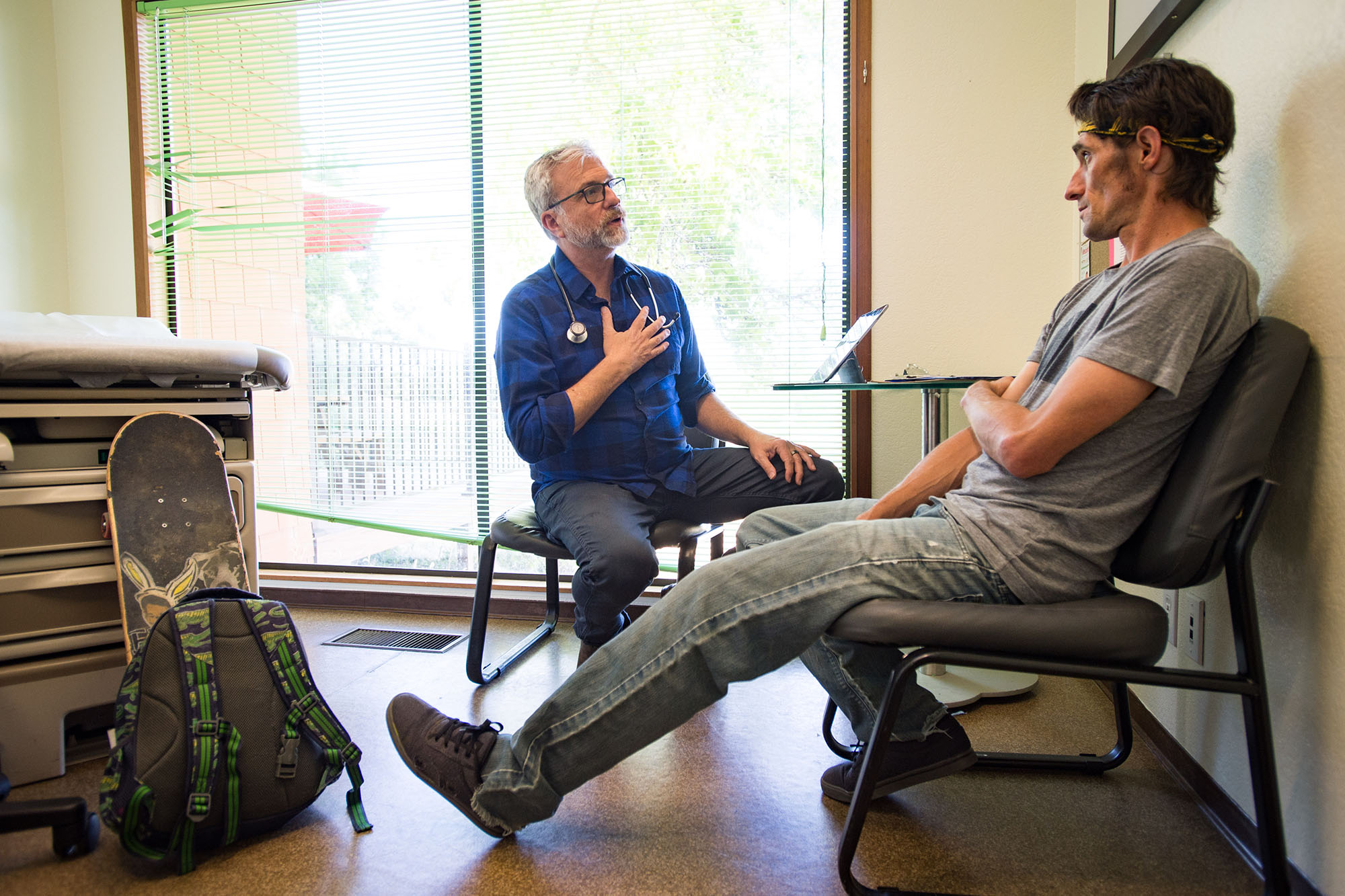View the Report
Jump to All Downloads & LinksAbout the Health Workforce Strategies Series
California is facing a health workforce crisis. There are not enough health workers to meet the needs of this state’s increasingly diverse, growing, and aging population. This series on health workforce strategies for California highlights current critical health workforce interventions and builds on the findings of the California Future Health Workforce Commission.
California is facing a health workforce crisis. There are not enough health workers to meet the needs of its increasingly diverse, growing, and aging population, and the situation is worsening. Shortages exist across professions and geographies, with sizeable urban and rural underserved populations. Additionally, although the state population is becoming increasingly diverse, the current health workforce doesn’t reflect these demographic shifts. For example, in 2019, 39% of Californians identified as Latinx, but only 14% of medical school matriculants and 6% of active patient care physicians in California were Latinx.1
“[Although] California is one of the most racially and ethnically diverse states in the United States . . . Latinos, African-Americans, and American Indians . . . are underrepresented in most health professions that require an undergraduate or graduate degree.”
—Healthforce Center at UCSF, July 2018
Over the past two decades, studies have shown the importance of racial and social concordance between physicians and their patients as well as the need for intercultural competencies, which lead to increased trust and greater patient satisfaction. Particularly important, however, is the ability to speak the same language, which not only increases trust and patient satisfaction but simultaneously decreases poor clinical outcomes because of miscommunication.2
In addition to private sector investments in health workforce development, many federal and state health workforce policy interventions focus on increasing the number of health professionals and diversifying the health workforce. Interventions exist at different phases of the professional and educational journey, beginning with students in their precollege years and extending through health professional school and beyond. Although California has enacted many of these health workforce policies in an attempt to increase both the size and the diversity of the workforce, current public and private sector efforts have not been sufficient to alleviate the crisis. Without knowing how state programs impact California’s health workforce, it is difficult to make objective, evidenced-based decisions about how to invest public resources to support these interventions. This summary of the evidence looks at these policy interventions with the goal of supporting California’s policymakers and thought leaders as they endeavor to prioritize workforce investments to realize the greatest impact.
The goal of this report is to review the evidence about the impact of key health workforce policy interventions (pipeline programs, scholarship programs, loan repayment programs, funding of graduate-level health profession training programs, residency funding) on the following:
- Increasing the availability of primary care, behavioral health, and dental providers in medically underserved areas (“access”)3
- Increasing the diversity of primary care, behavioral health, and dental providers to better reflect California’s population, particularly Latinx Californians (“diversity”)
- Improving health care access for patients with limited English proficiency by increasing the number of primary care, behavioral health, and dental providers able to provide services in a language other than English (“language concordance”)
Although health workers of all kinds are integral to California’s health system, this report focuses on those in the health workforce that require an advanced degree (e.g., physicians, dentists, physician assistants, advanced practice nurses, psychologists, social workers, licensed marriage and family therapists, and licensed professional clinical counselors) — professions for which access, diversity, and language concordance are particular challenges.
“According to the US Census Bureau (2015), almost 44% of California households speak a language other than English, and nearly seven million Californians (19%) report speaking English ‘less than very well.’”
—State of California Office of the Attorney General
The full report, as well as a graphical summary, are available for download below.
This publication is intended to complement the work done by the California Future Health Workforce Commission. The Workforce Commission, which was convened from 2017 to 2019, brought together experts across disciplines to develop recommendations to address the state’s health workforce shortages and to meet the evolving needs of California’s diverse residents. In 2019, the Workforce Commission issued its final report, Meeting the Demand for Health, which laid out those recommendations. Pursuant to that work, various stakeholders have referred to the Workforce Commission report to guide their decision-making on health workforce programming and investment. As they have done so, some have expressed a desire for a deeper understanding of the evidence as it relates to the recommendations, to support informed decision-making. More specifically, stakeholders want to understand where they can have the largest impact when making trade-off decisions about public sector health workforce investments. This initial report addresses interventions under the auspices of the Office of Statewide Health Planning and Development, the state agency most focused on the health professions workforce.
Authors & Contributors
Diane Rittenhouse, MD, MPH
Diane Rittenhouse is a senior fellow at Mathematica. Established in 1968, Mathematica collaborates with public and private sector changemakers by working at the intersection of data, methods, policy, and practice to accomplish its mission: improving public well-being. For more information, visit www.mathematica.org.
Alexandra Ament, MA
Alexandra Ament is an independent consultant.
Janice Genevro, PhD, MSW
Janice Genevro is a senior researcher at Mathematica.
Kara Contreary, PhD, MRes
Kara Contreary is a senior researcher at Mathematica.
Notes
- Alana Pfeffinger et al., Recovery with Limited Progress: Impact of California Proposition 209 on Racial/Ethnic Diversity of California Medical School Matriculants, 1990 to 2019, Healthforce Center at UCSF, December 2020; and Janet M. Coffman, Emmie Calimlim, and Margaret Fix, California Physicians: A Portrait of Practice, California Health Care Foundation, March 2021. ↩︎
- Richard L. Street Jr. et al., “Understanding Concordance in Patient-Physician Relationships: Personal and Ethnic Dimensions of Shared Identity,” Annals of Family Medicine 6, no. 3 (May 2008): 198–205; Lisa A. Cooper et al., “Patient-Centered Communication, Ratings of Care, and Concordance of Patient and Physician Race,” Annals of Internal Medicine 139, no. 11 (2003): 907–15; Rachel L. Johnson Thornton et al., “Patient-Physician Social Concordance, Medical Visit Communication, and Patients’ Perceptions of Health Care Quality,” Patient Education and Counseling 85, no. 3 (Dec. 2011): e201–8; and Alicia Fernández and Eliseo J. Pérez-Stable, “¿Doctor, Habla Español? Increasing the Supply and Quality of Language-Concordant Physicians for Spanish-Speaking Patients,” Journal of General Internal Medicine 30 (Oct. 2015): 1394–96. ↩︎
- Health Professional Shortage Areas (PDF) can be geographic areas, populations, or facilities. These areas have a shortage of primary, dental, or mental health care providers. Medically underserved areas (MUAs) are areas designated by HRSA as having too few primary care providers, high infant mortality, high poverty, or a high elderly population. ↩︎





